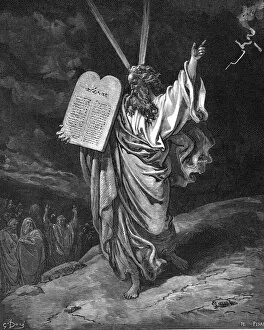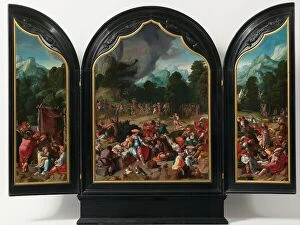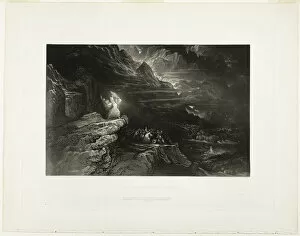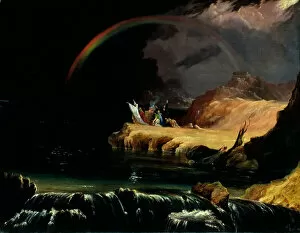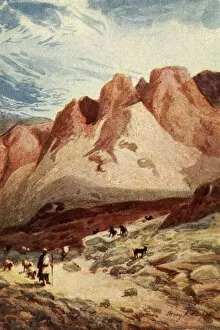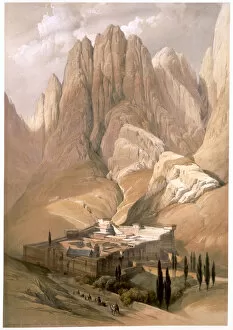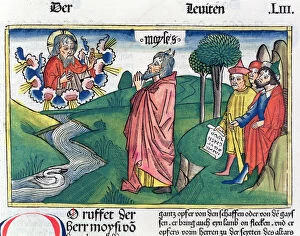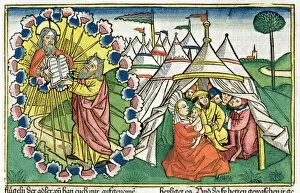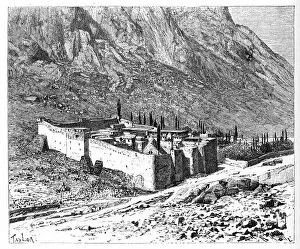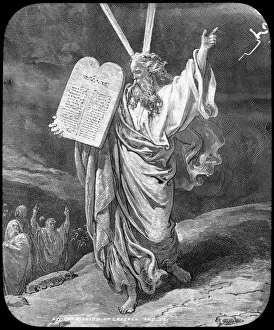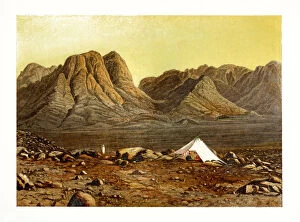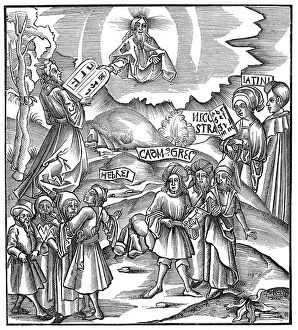Jebel Musa Collection
"Jebel Musa: A Sacred Mountain of Biblical Significance" Jebel Musa, also known as Mount Sinai, holds a significant place in religious history
For sale as Licensed Images
Choose your image, Select your licence and Download the media
"Jebel Musa: A Sacred Mountain of Biblical Significance" Jebel Musa, also known as Mount Sinai, holds a significant place in religious history, and is the very mountain where Moses descended with the tablets of the law, engraved with the Ten Commandments. The artistic depictions by renowned artists such as Gustave Dore and John Martin capture this pivotal moment in history. In 1866, Gustave Dore's artwork portrays Moses descending from Mount Sinai with an aura of divine light surrounding him. This powerful image symbolizes the importance and sanctity of the commandments he carried. Similarly, John Martin's illustration from 1833/34 showcases Moses breaking the first set of tablets upon witnessing his people worshiping a golden calf. This dramatic scene emphasizes Moses' righteous anger and his commitment to upholding God's laws. The Covenant depicted in an unknown artist's work from around 1843 highlights the sacred bond between God and His chosen people. It serves as a reminder that these commandments were not just rules but a covenantal agreement between God and humanity. Augustin Hirschvogel's depiction from 1548 captures Moses receiving the second set of tablets on Mount Sinai. The intricate details showcase both awe-inspiring natural surroundings and divine intervention during this holy encounter. Simon Julien's painting "Moses on Sinai" from 1773 beautifully illustrates how these tables became an integral part of Jewish tradition throughout centuries. Francis Frith’s photograph titled "The Written Valley" taken around 1857 showcases Jebel Musa’s breathtaking beauty—the rugged landscape that served as a backdrop for this monumental event in biblical history. Other artworks like "Christian at Mount Sinai" (c1910) by an unknown artist or "Mount Sinai - Acts vii 38" (c1924) by James Clark and Henry A Harper depict how this site has been revered not only by Jews but also by Christians.

